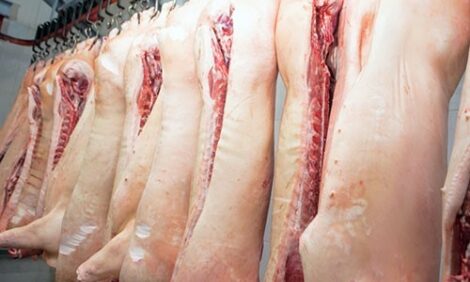



Pork Commentary: VIV Moscow – Industry Revival
CANADA - This past week Genesus has been at the VIV Moscow trade show. It’s an exciting time for the Russian Pork Industry. After twenty years of little or no investment in infrastructure, the levels of capital required to rejuvenate the Russian pork industry is in the billions of dollars, writes Jim Long.Russian pork production is beginning to recover in this country of 150 million people, but has to double its capacity to return to the production levels of just 10 to 12 years ago. The Russian government is stepping up with support from low interest loans and the political will for the establishment of swine production (unlike some other jurisdictions we are all aware of). The Russian economy is being driven by the windfall of $60 oil and high natural gas prices and this is creating a higher personal income. Statistics indicate that Russia is one of the leading countries in the world as far as percentage of disposal income spent on meat, approximately 7.5%, the US approximately 1.5%. A good market for meat expansion when you have meat lovers.
Russia has abundant arable land and grain available. Some of the Russian groups we spoke to have land tracts of over 150,000 acres (70,000 hectares). Domestic hogs are currently taking over 200 days to get to market with backfat levels over 30 mm (1.25 inches). The demand for new technology in the industry from the Russian producers at the Moscow VIV show included barn design, equipment, slaughter facilities, feed mills, genetics, etc. Everything was being searched for. The battle for Russian directions is between the small scale farm philosophy of the European industry versus the North American production model of large scale. We expect, in the end, the North American model will dominate, as Russia had 20,000 sow units twenty-five years ago. Scale is not feared in Russia, unlike the protected farm economy of Western Europe.
From the genetics perspective, it appears that many Russians are wary of European hybrid companies. Their results in the field have been less than stellar. Now, producers are looking for genetic verification from registered purebreds to protect themselves. Product integrity is an issue in any marketplace and Russia is no different.
This coming week, we are visiting Korea. Korea has approximately one million sows and market hogs are currently $1.25 US liveweight lb (yes - $1.25). Producers are making money obviously and is it any wonder pork exports from the US to Korea have been terrific in the last few months. We will report our observations next week.
China
Like Korea, prices have increased dramatically in China in the last few weeks, gaining 40%. The export opportunities are gaining. A weaker US dollar and possible appreciation of China’s currency would enhance the opportunity for export growth. 1.1 billion people who like pork more than other meat sounds like a good scenario. China has expanded pork production 20 million head per year in each of the last four years. Despite this, increased disposable income has allowed domestic consumers to devour this increase and still lead to increased prices. Bottomline – Russia, Korea and China…eating more pork driven by higher disposable income. People like pork – a better world economy drives pork exports for North America and the world is not becoming vegetarian. We are fortunate that we are all in a business with enhanced demand. In the US this year alone, January to April pork demand is up 3% - 2% more pork produced with year over year prices up 10%.








